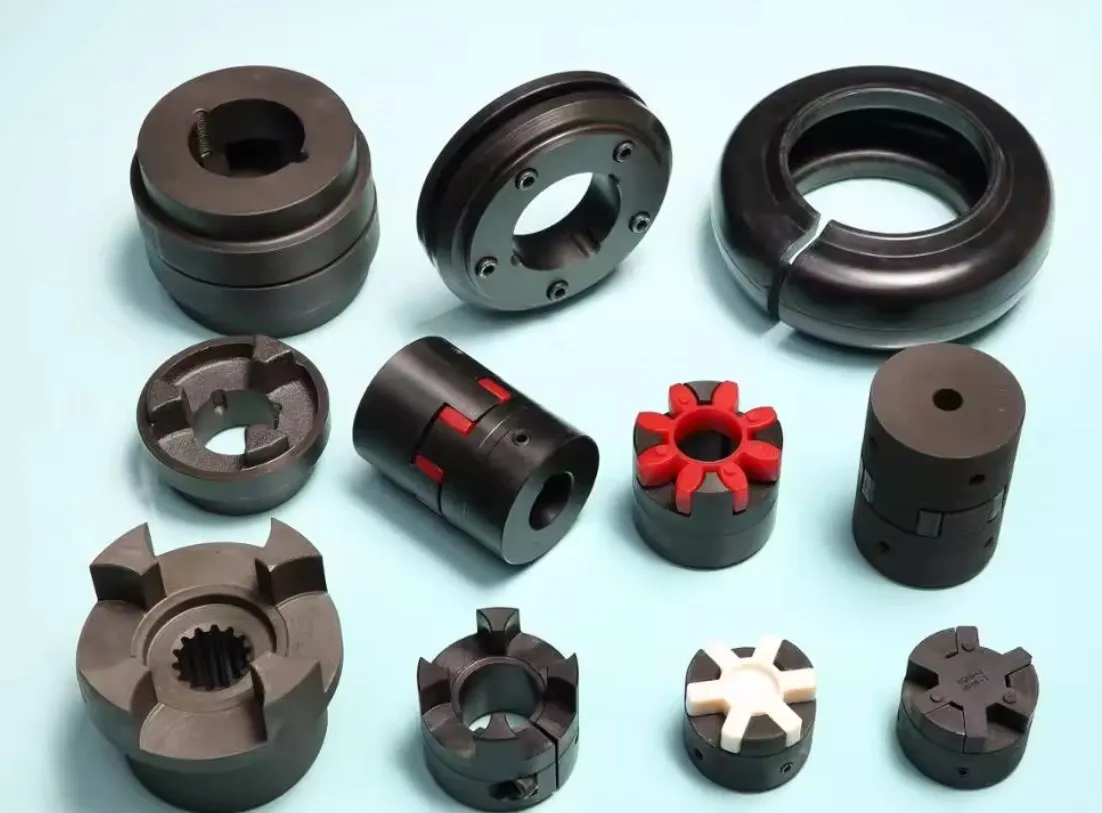Elastic Coupling for Nuclear Power Plants
Introduction to Elastic Coupling
Elastic couplings play a pivotal role in the smooth operation of nuclear power plants. These components are designed to transmit torque while accommodating minor misalignments in the shaft.
Advantages of Elastic Coupling
Elastic couplings offer numerous advantages, including vibration damping, torque transmission efficiency, and extended equipment lifespan.
Design and Construction
Elastic couplings are typically constructed using high-strength, flexible materials such as elastomers or high-grade rubber. Their intricate design enables them to absorb shocks and vibrations.
Applications in Nuclear Power Plants
In nuclear power plants, elastic couplings are used to connect generators, pumps, and other critical machinery, ensuring reliable and continuous operation.
Installation and Maintenance
Proper installation and regular maintenance of elastic couplings are crucial for optimal performance. This includes periodic inspections and timely replacement of worn components.
Factors Affecting Performance
Several factors, such as operating temperature, load conditions, and alignment accuracy, can significantly impact the performance of elastic couplings in nuclear power plants.
Innovations in Elastic Coupling Technology
Recent innovations in materials science and engineering have led to the development of more resilient and efficient elastic couplings, tailored for high-demand environments like nuclear power plants.
Environmental Considerations
Elastic couplings used in nuclear power plants must withstand harsh environmental conditions, including radiation exposure and extreme temperatures.
Economic Benefits
Utilizing high-quality elastic couplings can lead to significant cost savings by reducing downtime and maintenance expenses in nuclear power plants.
Comparison with Other Coupling Types
Elastic couplings are often preferred over rigid or metallic couplings due to their superior ability to handle misalignment and absorb vibrations.
Case Studies
Various case studies have shown the effectiveness of elastic couplings in enhancing the reliability and efficiency of nuclear power plants.
Future Prospects
The future of elastic couplings in nuclear power plants looks promising, with ongoing research aimed at further improving their performance and durability.
High Elastic Rubber Coupling

High Elastic Rubber Couplings are essential in mitigating vibrations and compensating for misalignments in high-stress applications.
Material Composition
These couplings are made from high-grade synthetic rubber, which provides exceptional elasticity and strength, ideal for demanding environments.
Shock Absorption
The inherent flexibility of rubber allows these couplings to absorb shocks effectively, protecting connected machinery from sudden jolts and impacts.
Temperature Resilience
High Elastic Rubber Couplings maintain their performance across a wide temperature range, making them suitable for diverse industrial applications.
Maintenance Needs
These couplings require minimal maintenance, primarily involving periodic inspections to ensure their continued functionality and replace any worn components.

What are flexible couplings used for?
Compensating Misalignment
Flexible couplings are used to compensate for slight misalignments between connected shafts, ensuring smooth torque transmission.
Vibration Damping
These couplings absorb and dampen vibrations, protecting machinery from damage and reducing noise levels.
Transmitting Torque
Flexible couplings transmit torque from one shaft to another, ensuring seamless power transfer in mechanical systems.
Accommodating Thermal Expansion
They can accommodate thermal expansion and contraction of materials, maintaining alignment and performance under varying temperatures.
Protecting Equipment
By mitigating shocks and vibrations, flexible couplings extend the lifespan of connected equipment and reduce the risk of breakdowns.

What are the three types of coupling?
Rigid Coupling
Rigid couplings are used where precise shaft alignment is required. They do not allow for any misalignment and are best suited for applications where shafts are perfectly aligned.
Flexible Coupling
Flexible couplings can accommodate slight misalignments and are used in applications where there may be some degree of shaft misalignment or movement.
Fluid Coupling
Fluid couplings transmit torque through a fluid medium, typically oil, and are used in applications where smooth engagement and torque control are essential.
How to Choose an Appropriate Elastic Coupling

Load Conditions
Understanding the load conditions, such as torque and rotational speed, is crucial for selecting the appropriate coupling.
Environmental Factors
Consideration of environmental factors, including temperature, humidity, and exposure to chemicals, will inform the choice of material and design.
Alignment Accuracy
Assessing the level of alignment precision required will help in determining whether a flexible or rigid coupling is more suitable.
Maintenance Requirements
Factor in the maintenance needs and the ease of replacing components when selecting an elastic coupling.
Cost Efficiency
Balancing performance requirements with budget constraints ensures that the selected coupling provides the best value for money.
HZPT: A Leader in Precision Couplings
HZPT was established in 2006 and has since become a leading manufacturer of precision couplings, ball screw support units, motor brackets, and motion modules. Our product line includes servo motor couplings, stepper motor couplings, micro motor couplings, and encoder couplings.
Advantages of HZPT Products
Advanced Technology
We utilize cutting-edge technology in our manufacturing processes, ensuring high-quality and reliable products.
In-House R&D Center
Our dedicated research and development center allows us to innovate continuously and improve our product offerings.
Comprehensive Testing Systems
We maintain stringent quality control with our in-house processing and testing systems, adhering to the highest standards.
ISO 9001:2015 Certification
Our commitment to quality is validated by our ISO 9001:2015 certification, ensuring that we meet international standards.
Global Recognition
Our products are widely recognized and used by top customers in Japan, the USA, Germany, Israel, Malaysia, Singapore, and Taiwan, among others.
We invite you to explore our range of elastic couplings and experience the HZPT difference. Our products are designed for high-precision connections and are widely applied in electronics, solar energy, photovoltaic industries, machine tools, packaging, molds, medical devices, printing, and various automation machinery. Partner with us for unmatched quality and reliability in your industrial applications.